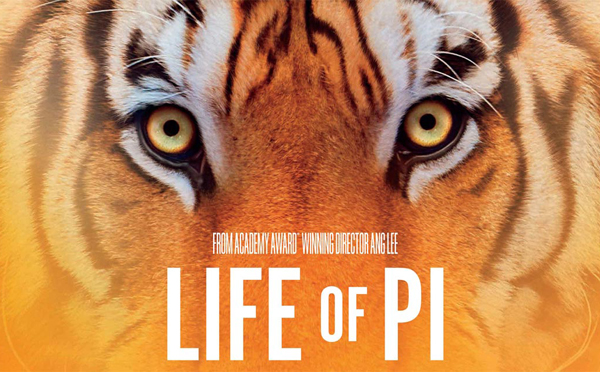Would you want to be stuck in the middle of the ocean with a tiger? Me neither. But it might be more entertaining than being trapped in a theater with an overly philosophical narrator in the slow moving “Life of Pi,” based on a novel by Yann Martel.
I wish I could start my review with a riveting scene in the film, but from the first ten minutes on, I felt ambushed by metaphorical tie-ins and “deep” narration that hindered my enjoyment. The premise of the movie is that Pi Patel (Suraj Sharma) and his family, who own a bunch of zoo animals, pack up their creatures onto a boat ( like Noah’s Ark) and head for Canada. On the way, a terrible storm hits the ship, and the religiously-confused, intelligent, and kind-hearted Pi becomes stranded on a life-boat with a tiger named Richard Parker.
It takes way too long to get Pi on the boat. First, the audience has to learn about his struggles with religious identity, his first love, and his affection for animals. All so that the concepts of spirituality, saying good-bye in life, and the importance of story-telling hammer the viewers brain constantly throughout the film. Oh, and how could we do without the narration of an adult Pi (Irrfan Khan,) who is relaying his story to the nameless writer/interviewer, played by Rafe Spall.
Lines from Adult Pi like, “The whole of life becomes an act of letting go” and “Always have hope,” are what stripped this movie of its “magic” potential. Just a guess, these are probably quotes from Martel’s novel. Now, the movie is based on a book, and it’s sensible that the movie would directly quote the book, but I felt like someone was holding out the text and screaming, “THINK ABOUT LIFE AND HOW THIS MOVIE RELATES TO EVERYTHING IN THE HUMAN EXPERIENCE!”
Disregarding moments like these, the movie was visually breathtaking. Once Pi finally gets on his life boat, you could pretty much take a random snapshot of any scene and hang it up in your living room. One scene in particular stands out; Pi sits in the company of countless jellyfish at night. The dark water is colored with neon-blue dots, and their magnificent glow spreads as Pi waves his hand slowly through the ocean. The twinkling beauty makes you stop in awe.
Also, I was impressed and baffled by Parker’s realistic features. Four live tigers were used in filming, but CGI played a major part as well, and Suraj Sharma never had to act with a live tiger. That said, the sharp claws, breathing motions, and waving hair of Parker, as well as Sharma’s emotional interaction with Parker’s character, left me feeling attached to the tiger, though not as strongly as I think Director Ang Lee intended.
Ultimately, if you’re going to see “Life of Pi,” you should see it in the theaters in its final showing days. The visual effects are its winning qualities. Otherwise, I’d suggest reading the book.
Runtime: 127 minutes
Rating: PG








